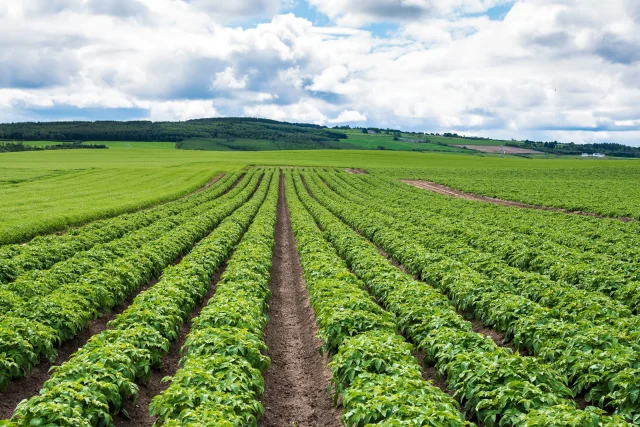Published on 16th March 2022
Local Insights
FieldView garners interest – your questions answered

The launch of Bayer’s FieldView, a global platform for the collating and analysing of field data, has attracted strong interest with many of those keen on harnessing its capabilities wanting to know more about its potential.
The launch of Bayer’s FieldView, a global platform for the collating and analysing of field data, has attracted strong interest with many of those keen on harnessing its capabilities wanting to know more about its potential.
Speaking at the Bayer potato conference, Edward Lawton-Bradshaw, Bayer Climate Activation Specialist, answered questions from those interested to understand more about the program.
Much of the interest from users was focussed on specifics, here we run through some of the questions that dominated interest from growers and advisers.
1. What's the best use of satellite imagery?
FieldView currently produces three classes of image but making the most of the information they contain largely depends on what you want to analyse.
The Climate Crop index (CCI) (vegetation) images are an excellent means of assessing crop growth from canopy development through to senescence. These show variation in biomass both within and between fields and allow users to target inputs where they will generate the greatest return.
Scouting images are a variation of the vegetation maps with the algorithm calibrated to highlight even small areas of difference. These are suited to identifying crop stress or damage and can be used to prioritise areas for physical inspection when in the field.
Crop water use analysis uses the vegetation images combined with weather data. These support a more proactive approach to irrigation by showing how much water the crop is using and which areas in the field are using the most.
Changes in soil texture are likely to affect water availability and therefore crop uptake. We have seen instances of this and of irrigation failures, such as where an irrigator gets stuck. Feedback from growers with physical sensors in the field is that the accuracy of the crop water use maps is very good.
2. Can FieldView be used for targeted desiccation?
It is possible to produce a variable rate desiccation prescription which can then be uploaded to the sprayer. The vegetation maps show where there is more green biomass and therefore where rates need to be increased.
3. Can I use FieldView on brassica crops?
FieldView has been used extensively with oilseed rape, but as yet we don’t have the sufficient experience with other brassica species. If you are interested in evaluating FieldView in brassica vegetables, please contact Bayer FieldView through the website: https://cropscience.bayer.co.uk/fieldview/
4. Does it work with other farm management programs?
FieldView has over 70 platform partnerships globally and in the UK we have integration with Claas Telematics, My John Deere, Gatekeeper and Omnia. We recognise farmers want to be able to move data seamlessly between platforms and plan to develop out partnership further to deliver more value.
5. Is there technical support?
Once the user has registered for an account, we arrange a call to go through the details, compatibility checks and support getting everything setup. Once setup is completed, the user downloads the app and will be able to see historical images back to 2017 within a few hours.
The app is intuitive so most users set it up themselves, but where assistance is needed, a visit from a member of the UK field team can be arranged.
6. How much does it cost?
A trial is available where a grower can use FieldView free for 12-months. After the trial, the program costs a flat-rate fee of £300 per account per year plus the cost of the hardware such as a Fieldview drive (£280) and cables (typically about £150).
For more information visit https://cropscience.bayer.co.uk/fieldview/


